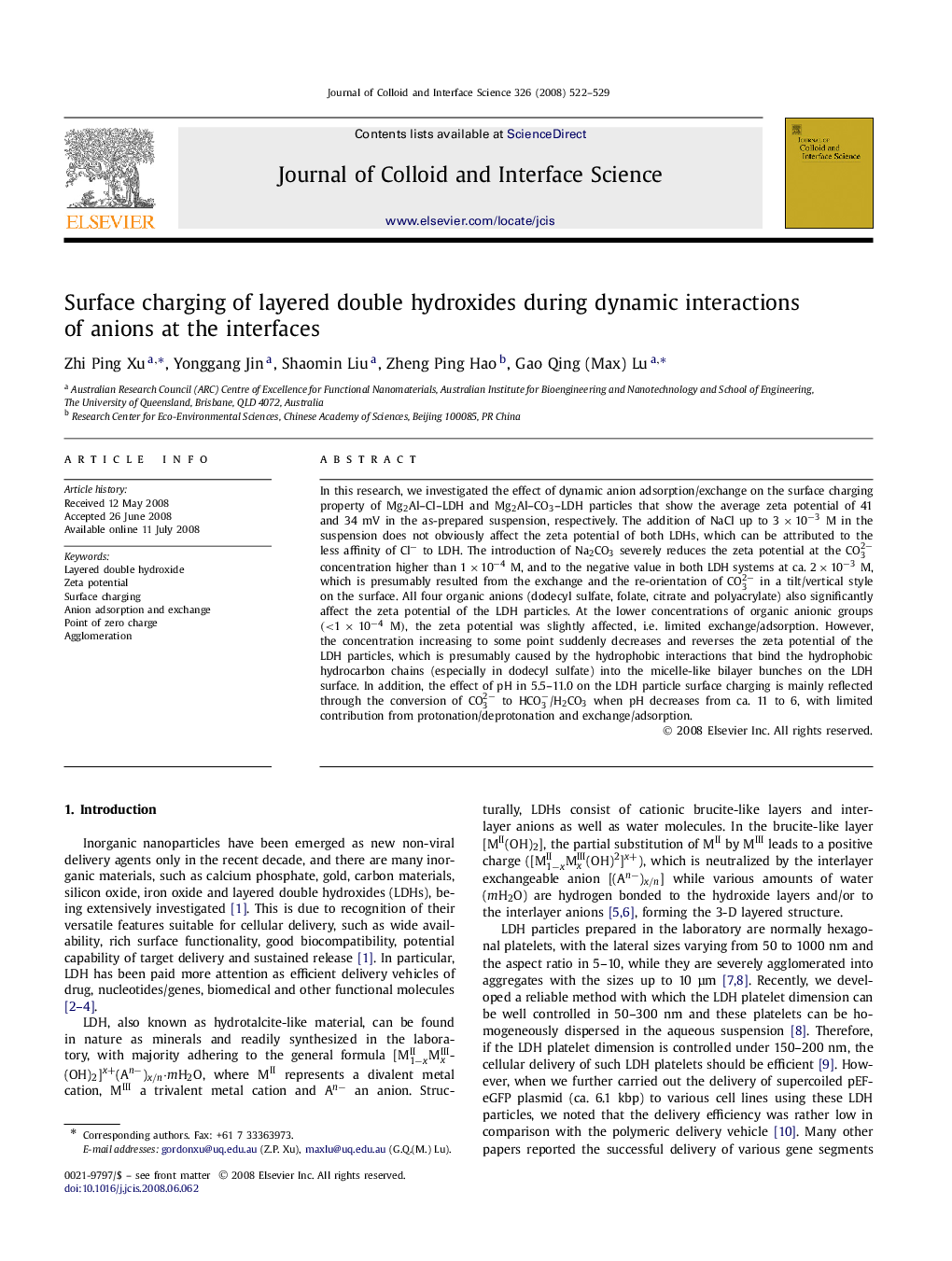| Article ID | Journal | Published Year | Pages | File Type |
|---|---|---|---|---|
| 611350 | Journal of Colloid and Interface Science | 2008 | 8 Pages |
In this research, we investigated the effect of dynamic anion adsorption/exchange on the surface charging property of Mg2AlClLDH and Mg2AlCO3LDH particles that show the average zeta potential of 41 and 34 mV in the as-prepared suspension, respectively. The addition of NaCl up to 3×10−3 M3×10−3 M in the suspension does not obviously affect the zeta potential of both LDHs, which can be attributed to the less affinity of Cl− to LDH. The introduction of Na2CO3 severely reduces the zeta potential at the CO2−3 concentration higher than 1×10−4 M1×10−4 M, and to the negative value in both LDH systems at ca. 2×10−3 M2×10−3 M, which is presumably resulted from the exchange and the re-orientation of CO2−3 in a tilt/vertical style on the surface. All four organic anions (dodecyl sulfate, folate, citrate and polyacrylate) also significantly affect the zeta potential of the LDH particles. At the lower concentrations of organic anionic groups (<1×10−4 M)(<1×10−4 M), the zeta potential was slightly affected, i.e. limited exchange/adsorption. However, the concentration increasing to some point suddenly decreases and reverses the zeta potential of the LDH particles, which is presumably caused by the hydrophobic interactions that bind the hydrophobic hydrocarbon chains (especially in dodecyl sulfate) into the micelle-like bilayer bunches on the LDH surface. In addition, the effect of pH in 5.5–11.0 on the LDH particle surface charging is mainly reflected through the conversion of CO2−3 to HCO−3/H2CO3 when pH decreases from ca. 11 to 6, with limited contribution from protonation/deprotonation and exchange/adsorption.
Graphical abstractThe adsorption/exchange of dodecyl sulfate and the self-assembly on the surface change the zeta potential of LDH particles from the positive to the negative.Figure optionsDownload full-size imageDownload as PowerPoint slide
